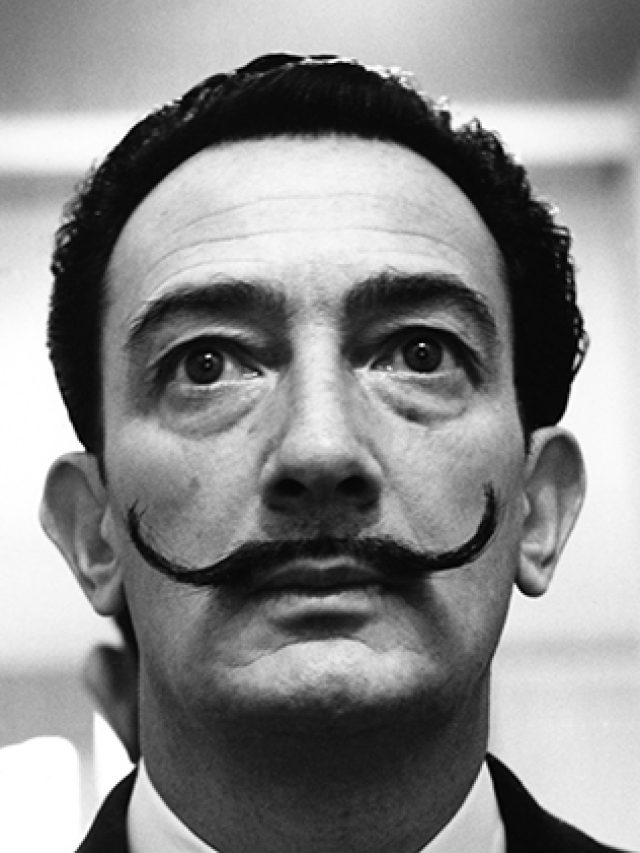Fashion is an ever-evolving industry. It is the progenitor of fast fashion, replicating trends into inexpensive final products to boost the style sense and perhaps the ego of the end consumer. While most of the fashion moments are engendered from the minds of great designers, some keep on revisiting the old and classics. In the age of mass information, one of the artists whose work has undoubtedly informed the fashion trends is Salvador Dali.
Salvador Dali: A Fashion Maverick
Who is Salvador Dali? Dali was a prominent figure in the surrealist art movement. Surrealism deals with extracting the creative and imaginative from the subconsciousness. The relationship between Dali and surrealism is one for the ages. He dabbled in several paintings, with Salvador Dali The Persistence of Memory, taking centre stage, followed by The Disintegration of the Persistence of Memory by Salvador Dali.

Salvador Dali’s style and his iconic moustache bamboozle the masses, even today. While some might see Dali’s fashion sense as eccentric, we like to consider it as a pinnacle of the movement. The art industry wasn’t the only one to feel his mettle, he was also popular in the fashion industry as is evidenced through his numerous collaborations.
CollaborationS with Schiaparelli
Elsa Schiaparelli founded the House of Schiaparelli in 1927. She soon saw herself in the designer’s shoes, managing the fashion house from the 1930s to the 1950s. The house’s primary motive was to uplift women and showcase their intellect as well as their sexuality. Since a ‘modern’ woman was seen as an eccentric and aberrant entity, there was no one better to realize her vision than Salvador Dali.
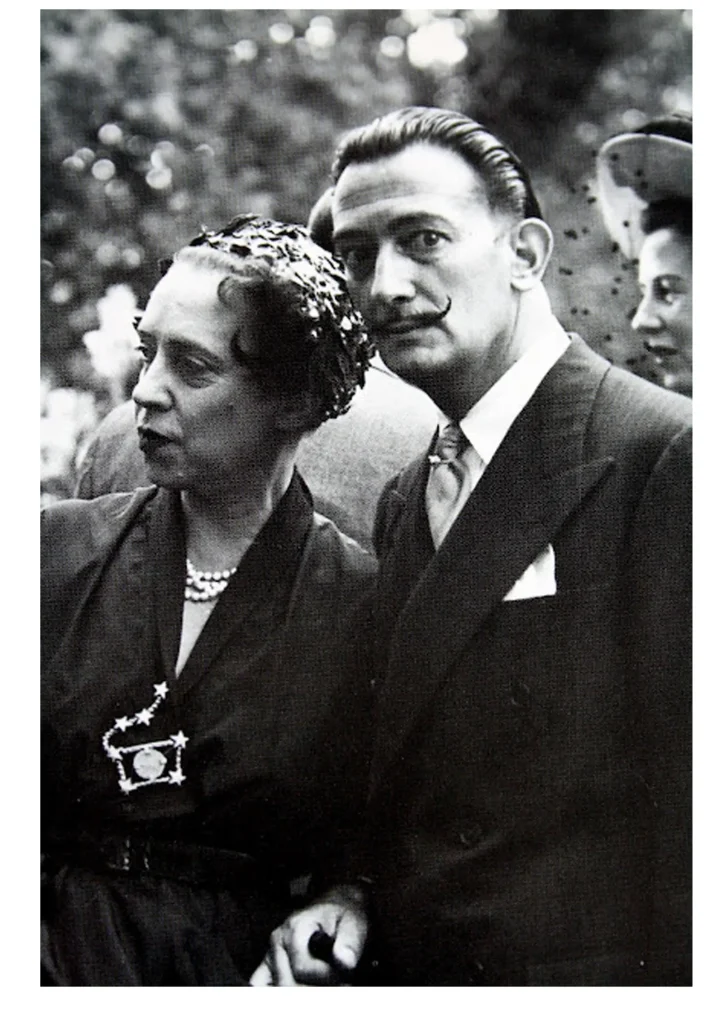
The relationship between Elsa Schiaparelli and Salvador Dali was pure barter. Elsa introduced Dali to the high Parisian society, whereas Dali lent her his idiosyncrasies. This mutually beneficial relationship resulted in several outlandish fashion moments.
Telephone Dial Compact Powder (1935)
In 1935, every high-society woman and starlet carried several essentials with them – one of them being a compact powder. Schiaparelli targeted this demographic with the assistance of Salvador Dali. Dali designed the compact powder in the form of a telephone dial. These came in two versions – black lacquer and tortoise shell. Women even had the option to get their names engraved in the centre of these compacts.
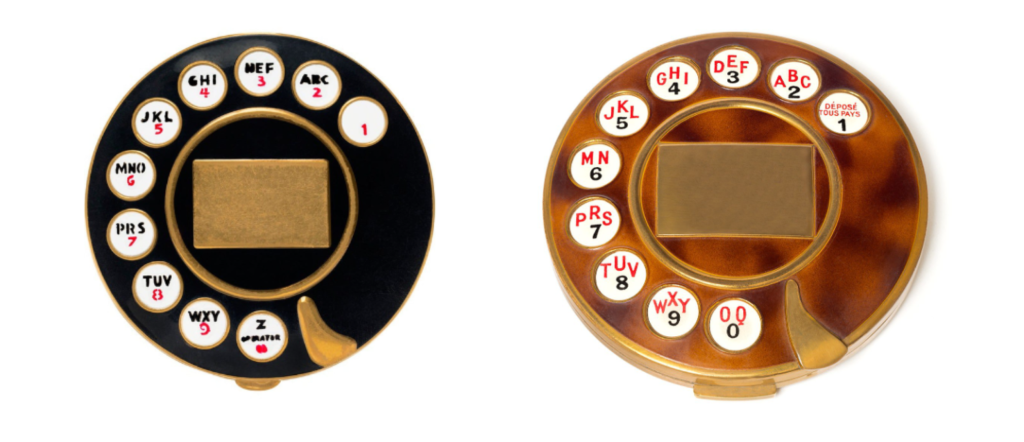
By the 1930s, telephones were rather common. However, they were only found in affluent homes. Salvador Dali’s vision is not simply a testament of stature, but also a transmutation of something feminine into masculine – a source of power.
Drawer Suits (1936)
The idea of these suits was born of one of Salvador Dali paintings, Anthropomorphic Cabinet (1936). The drawer suits mark the first clothing collaboration between Schiaparelli and Salvador Dali. The drawer suits made their debut at Schiaparelli’s Winter 1936-1937 Haute Couture Show. The navy blue suits were quite similar to the olden contemporary world. However, he concocted five pockets as drawers and the black plastic buttons as their knobs.
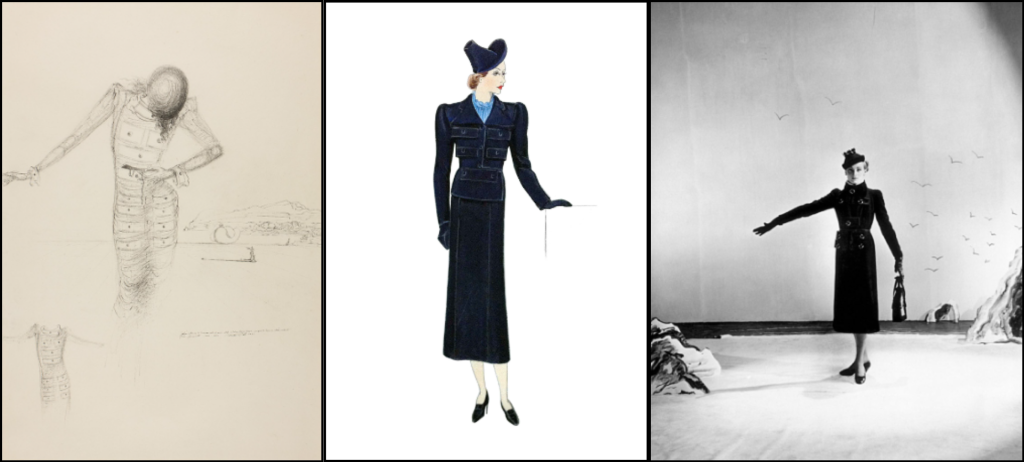
Courtesy – Fundacio Gala-Salvador Dalí (L)/ Schiaparelli (M)/ Cecil Beaton (R)
The Lobster Dress (1937)
In the 1930s, Salvador Dali obsessively incorporated lobsters in his works. Whether it was ‘New York Dream-Man Finds Lobster in Place of Phone’ (1935) or its mixed media rendition ‘Lobster Telephone’ (1936), lobsters were heavily featured in his work. To him, lobsters were a motif of raw sexuality.

Courtesy – Dali Paintings
Elsa commissioned Salvador Dali to paint a lobster on her new creation – The Lobster Dress. The A-line off-white silk gown featured a giant lobster, starting at the legs of the wearer, the claws resting at the calves, and the tail stopping at the pubic mound (the Sacral Chakra). The dress would’ve been completely (read destroyed) had Elsa permitted him to add mayonnaise to it. The dress was featured in Schiaparelli’s 1937 Summer/Fall show and later worn by American socialite, Wallis Simpson before her wedding to Edward VIII.
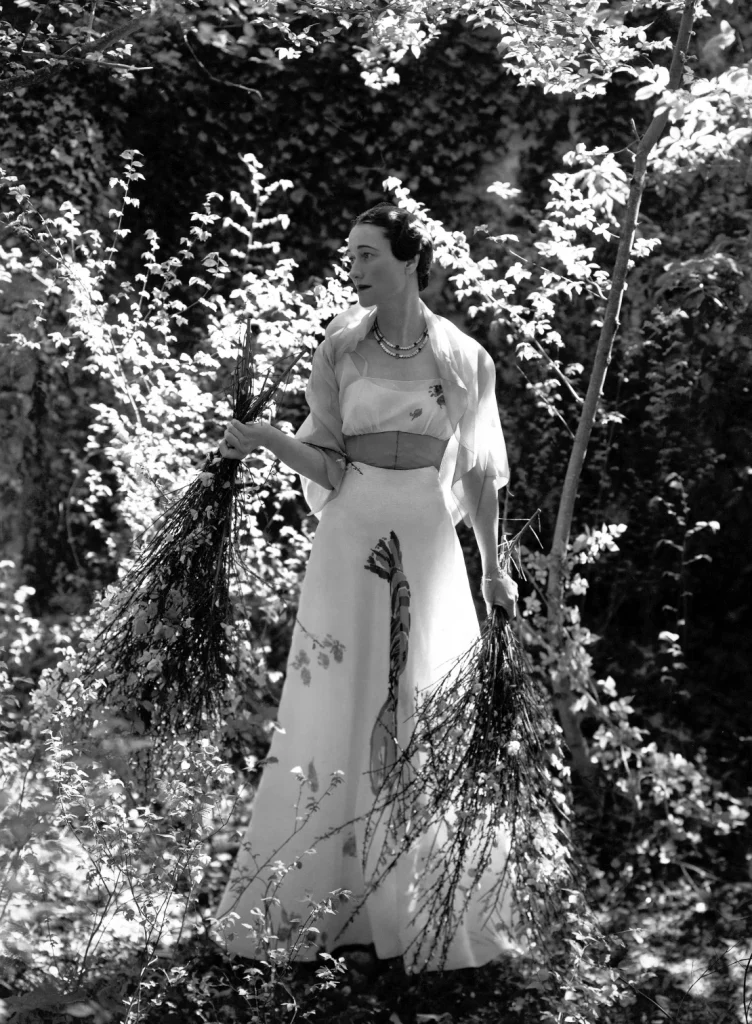
Shoe-Shaped Hat (1937)
Salvador Dali was once again brought in to design an outlandish hat to be featured in Schiaparelli’s 1937-38 collection. The hat was designated to be worn with a black dress and an embroidered jacket. The embroidered lips are positioned on the lapels and pockets. The bust is meant to invoke the imagery of the voluptuous actress Mae West. Before its debut, Dali’s wife, Gala and fellow actress Daisy Fellows wore it in Venice.
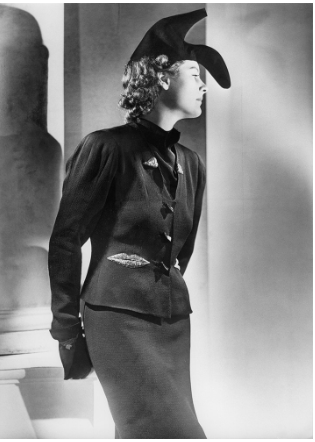
Gala had taken a photo of Salvador Dali wearing a woman’s shoe as a hat. Mesmerized by the absurdity, he took inspiration from it and created it into a marvellous piece of wearable art. The hat came in two colours – solid black and shocking pink.
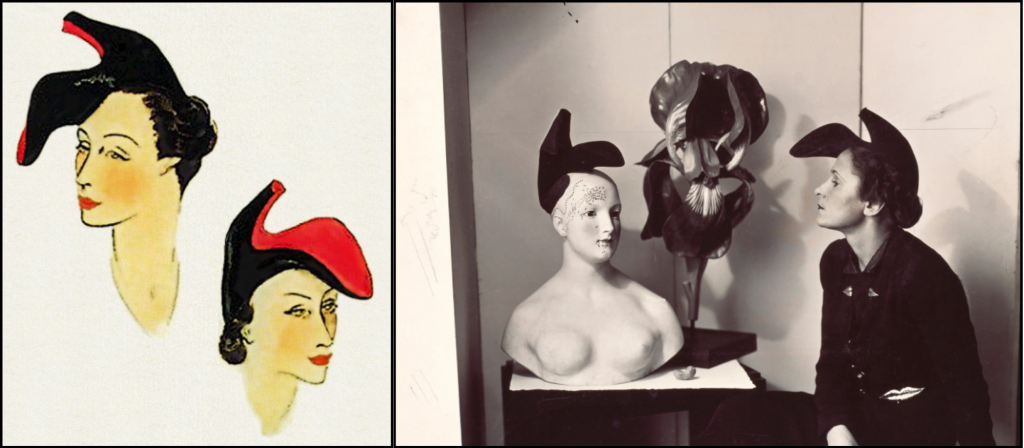
Tear Dress (1938)
The ‘Tear Dress’, designed by Salvador Dali, quickly became the talk of the town upon its debut in the 1938 Le Cirque Collection. The bias-cut pale blue sleeveless dress had a trompe-l’oeil motif printed all over it. It seemed as if the dress was torn apart at strategic places exposing the skin and pink flesh of the wearer. Black, pink, and magenta fabric appliques were used to accentuate the effect of hanging shreds and skin. It included a circus big-top headdress, made of the same fabric and pattern.
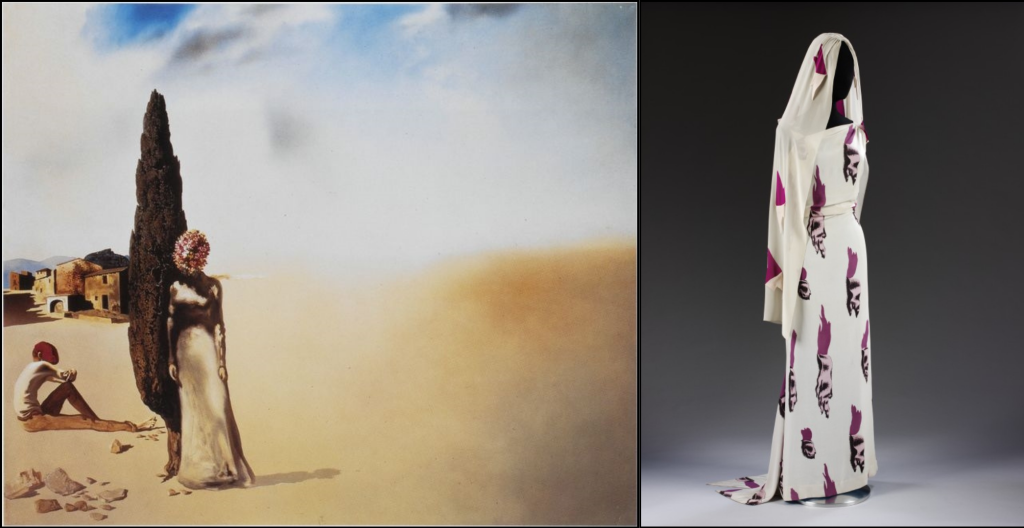
Courtesy – Fundacio Gala-Salvador Dalí (L)/ V&A Museum (R)
This fashion moment borrowed heavily from Salvador Dali’s ‘Necrophiliac Springtime’ (1936) and ‘Three Young Surrealist Women Holding in Their Arms the Skins of an Orchestra’ (1936). These Salvador Dali paintings depict women wearing ripped dresses. It seems like both their bodies and dresses have melted, thereby making it impossible to differentiate between the accidental tears and their flesh. The painting and subsequently the dress posits the idea of the pain a woman has to endure in her everyday life. It is also a subtle nod towards propagated violence aimed to dehumanize the allegedly sexual female form.
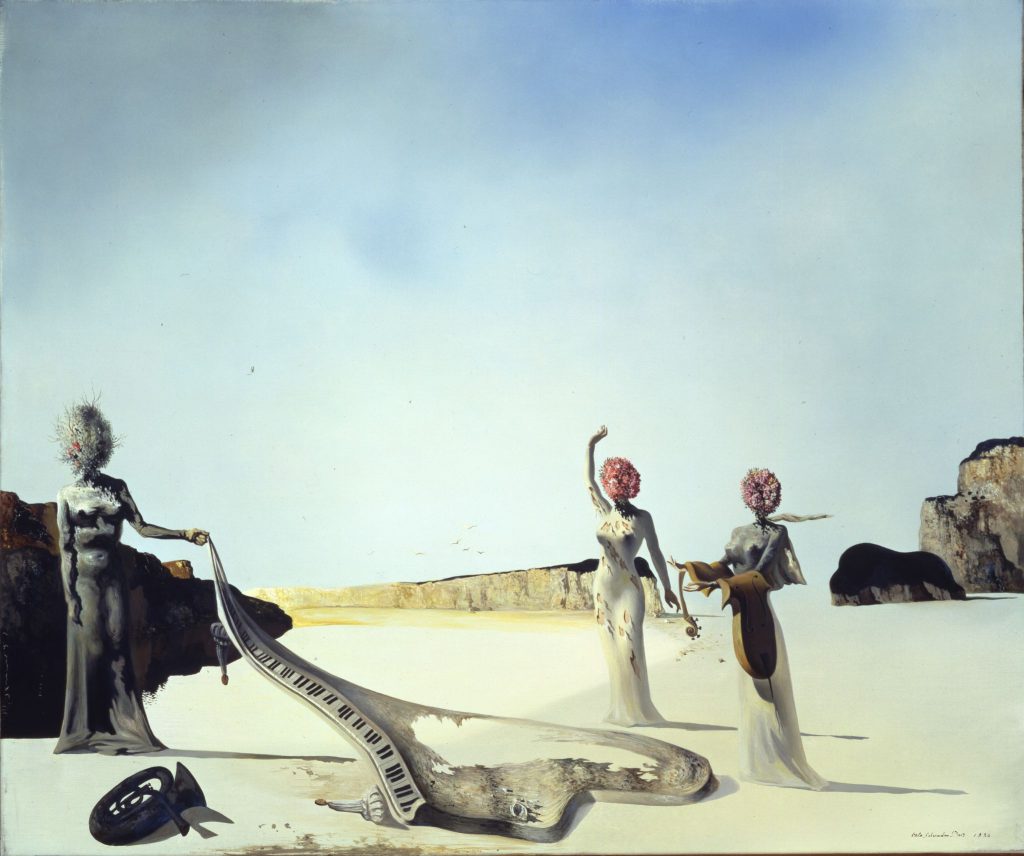
Courtesy – Fundacio Gala-Salvador Dalí
Skeleton Dress (1938)
Another marvel that stood out from the 1938 Le Cirque lineup was the skeleton dress. It was allegedly inspired by the circus act ‘The Skeleton Man’, a design curated by Salvador Dali. The black silk body-hugging gown features quilted padding resembling bones stitched onto the outer layer of the rayon crepe. The visible skeletal ‘bones’ render an element of goth to the dress.
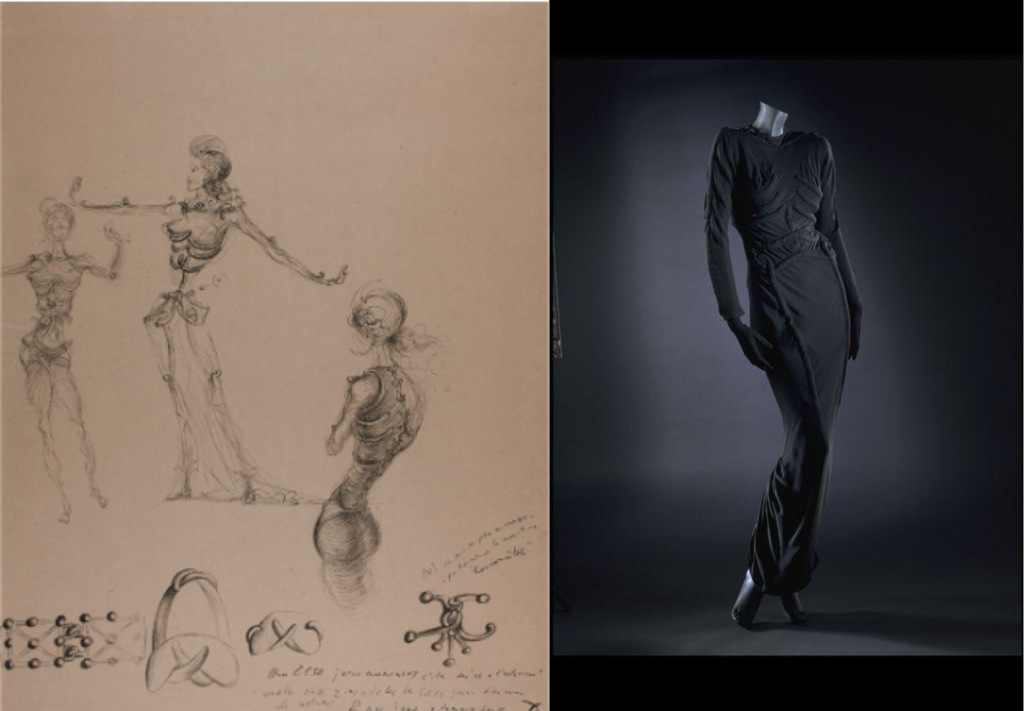
Courtesy – Fundacio Gala-Salvador Dalí (L)/ V&A Museum (R)
Salvador Dali’s skeleton dress made a comeback in Schiaparelli’s 2020 Spring-Summer Haute Couture show. This time, the body-hugging gown was replaced by a spaghetti-strapped dress using mesh. The bones were highlighted using sequins and decorative paillettes. It was also the foundation for the 2020-21 collection, which featured a strapless tea-length dress.
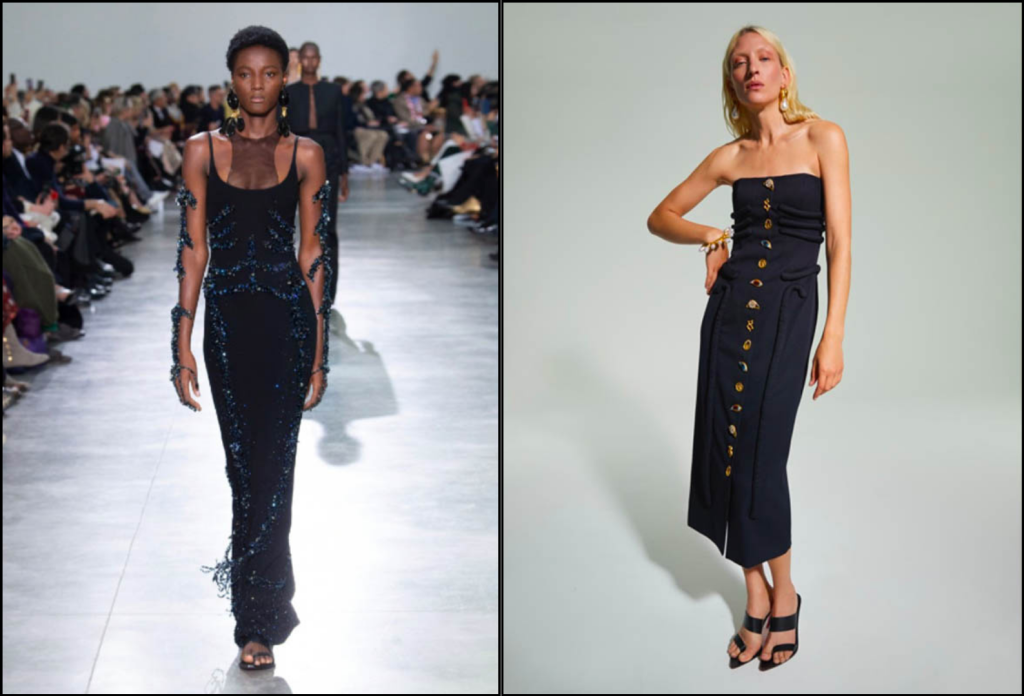
Dior in 2045 (1950)
In the 1930s, Salvador Dali met with Christian Dior, but they collaborated much later. The pair worked on a futuristic dress, now known as ‘Costume of the year 2045.’ The dress was presented at a fashion show in Brazil. The teal dress is an exaggerated version of the 1950s aristocratic society. It is both elegant and pompous. As could be expected, a long cane (even longer than Dali’s) was used as an accessory. The cane symbolized the need for moral and emotional support (which we must admit is not the case. Thank the Lord!)
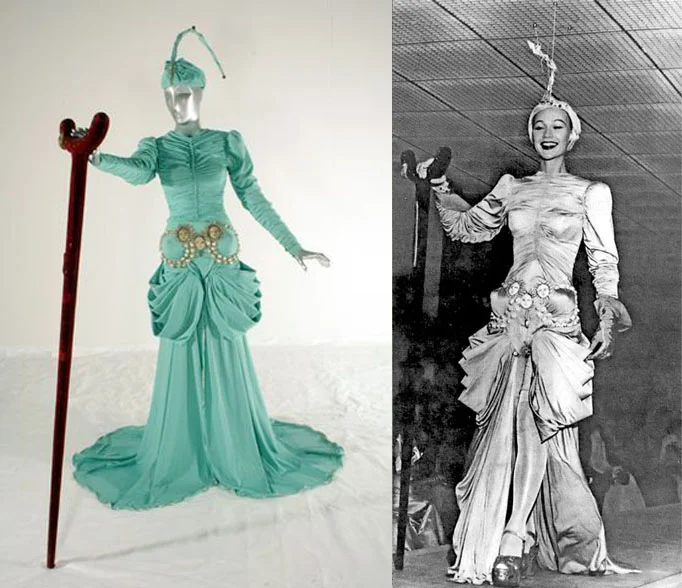
Blame it on Salvador Dali for causing a fabric shortage. The ‘costume’ features prosthetic breasts and an INSANE amount of fabric ruched around the torso and the sleeves. Extra fabric is pleated around the hips to enhance their shape. In addition, he placed three metallic faces around the pelvic mound to symbolize the onset of shocking sexual emancipation. At one point, it stops being Dior and turns into an Alexander McQueen. Since the dress is made especially for the year 2045, we just have to wait 22 more years for its fast-fashion comeback.
Dali’s Jewelry
Salvador Dali was also a jewellery designer. While he only realized his vision (with intricate details we must add, taking care of the material, shapes, and colours) on paper, it was Argentinian gold/silversmith Carlos Alemany who manufactured these pieces. Each of these pieces was inspired either by his own oeuvre or pop iconography. He designed several pieces between 1941 to 1970.
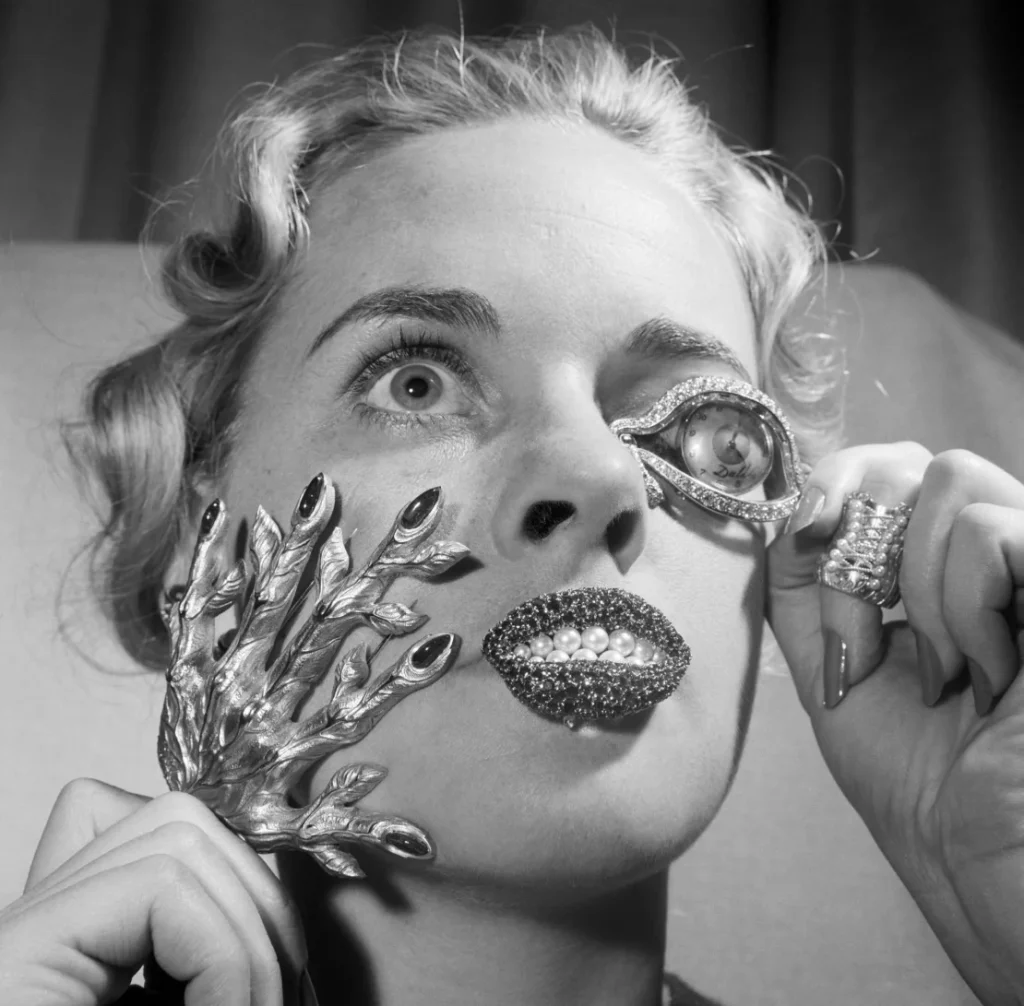
The 1949 piece, ‘L’ull del temps’, otherwise known as ‘The Eye of Time’ is based on Salvador Dali The Persistence of Memory. We believe Mae West was Dali’s muse. Despite making perfume bottles and the drawer suit as an ode to the actress, Dali crafted ‘Els llavis de Rubis’ or Rubis’ Lips in 1950, taking inspiration from Mae West’s lip-shaped sofa. He also designed, ‘El cor reial’ (The Royal Heart, 1953) and ‘L’elefant de l’espai’ (The Elephant of Space, 1961) based on recurring motifs of elephants and hearts from his paintings.
Jack Winters ‘Nightmare’ Swimwear (1965)
After his success with designing, Salvador Dali wished to detach himself from the gowns and create a line of swimwear. His search for a designer led him to Jack A. Winters in Wisconsin. In 1965, the duo debuted their line titled ‘Nightmare Beachwear’. The collection featured body-hugging fabric, inflatable accessories, and experimental designs.

The show was accompanied by a black-and-white video. The video narrates the highlights of the show – Salvador Dali measuring a model’s flat chest; a model wearing a mono-kini; a model with eyes painted over her breasts; and a design which literally incorporates an inflatable beach ball carrier.
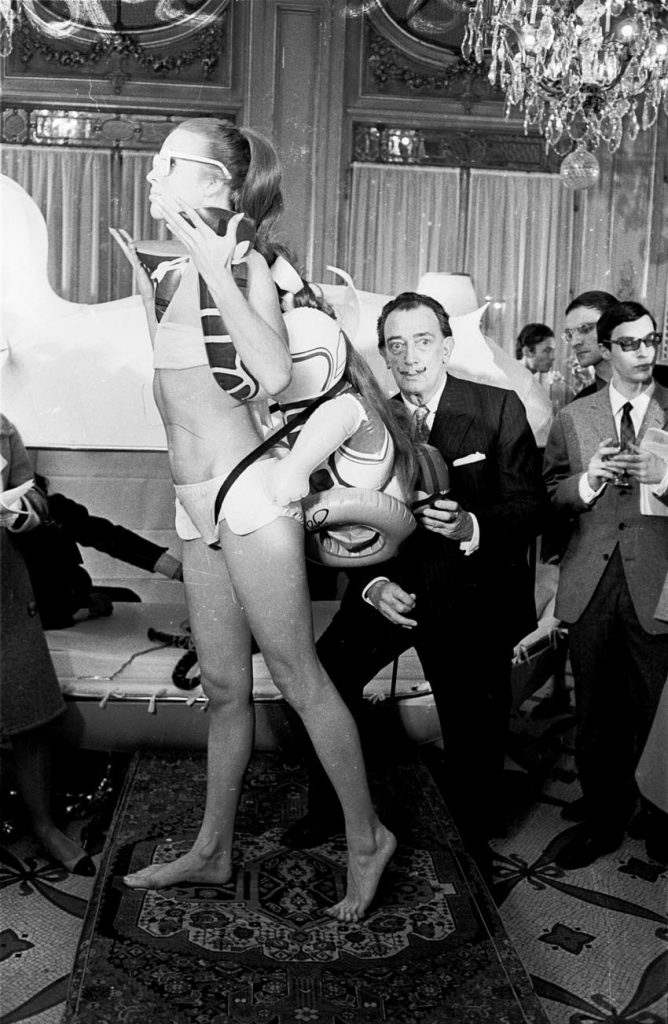
Photo Courtesy – Swarovski

Hi Ya’ll !!
I love writing about pop culture and all things queer.
Sub Editor at Abir Pothi


